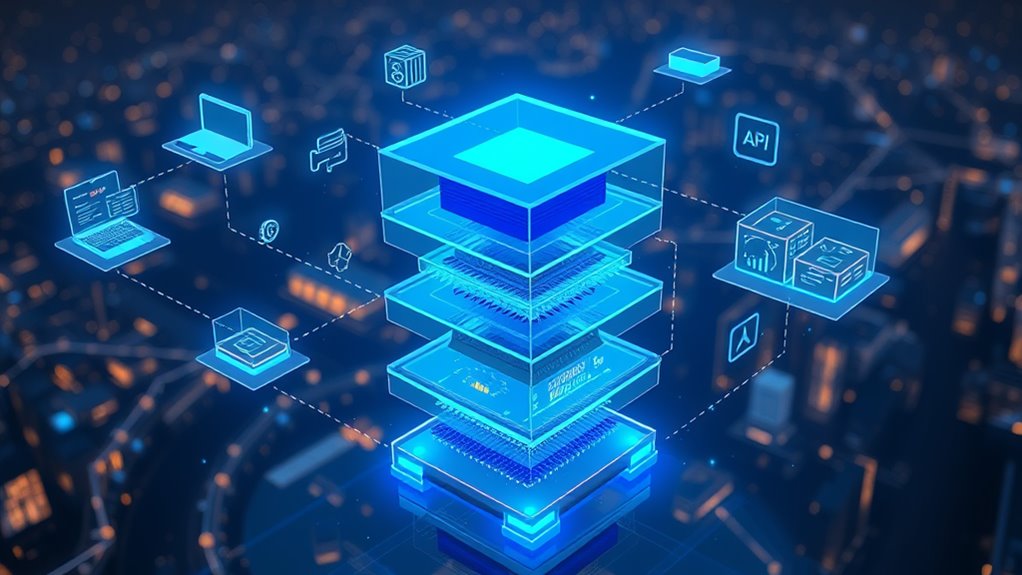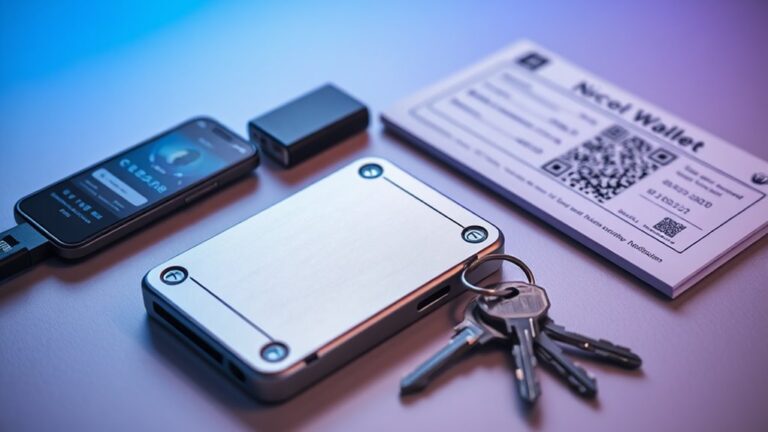Understanding Layer 4 Blockchain: Applications and Beyond
Note: This post may contain affiliate links, and we may earn a commission (with No additional cost for you) if you purchase via our link. See our disclosure for more info. The gold and crypto world is constantly changing. This is not financial, investment, legal, or professional advice. So, please verify the information on the gold and cryptocurrency provider’s websites.
Layer 4 in blockchain is a head-scratcher. Experts can't agree if it's about user interfaces or actual applications like dApps and wallets. Some say it's the application layer, while others scream “user layer!” It's a chaotic mix, and that confusion? Just a day in the life of blockchain. Smart contracts straddle multiple layers, adding to the mess. Buckle up; if you want clarity, there's more to uncover in this layered landscape.

In the wild world of blockchain, Layer 4 applications are where things get interesting—or confusing, depending on who you ask. Some experts claim Layer 4 is all about user interaction, including wallets, APIs, and dashboards. Others insist it's the application layer, packed with smart contracts and decentralized applications (dApps). So, which is it? Beats me. Everyone seems to have their own layering model, and they don't always agree.
Take a look at the sources. One says Layer 4 is the application layer. Another calls it the user layer. It's like a game of telephone gone horribly wrong. The first source insists that smart contracts and dApps live in Layer 4, while most others stick to a tidy Layer 3 for those same applications. Confusing, right?
Layer 4's identity crisis: is it the application layer or the user layer? Everyone has their own take, and it's a perplexing mess.
Then you've got the second source, which throws in a Layer 4+—because apparently, we need to complicate things even more. This Layer 4+ is all about user-facing tools. Wallets and browsers? Sure, they're part of it. But it's not clear how they fit into the grand scheme of things.
In essence, Layer 4 applications might include user interfaces that help individuals interact with the blockchain. But are those interfaces really applications? Or are they just the door to the real deal? It's a head-scratcher. Additionally, understanding Layer 4's role in blockchain is crucial for recognizing how it facilitates user interaction with decentralized protocols. It's important to note that Layer 0 includes interoperability protocols for communication between blockchains, which further adds to the complexity of defining the layers. Smart contracts, with their self-executing code, represent one of the most transformative elements that operate across these blockchain layers, automating agreements without intermediaries.
The whole concept revolves around how you categorize these layers. Some folks use a five-layer model, while others stick to a neat four. It's enough to make your head spin. Layer 4 might be the user layer, but if you're looking for straightforward applications, better check the Layer 3 box.
In this chaotic blockchain landscape, clarity is hard to find. Get ready to sift through the jargon and the buzzwords. Because Layer 4? It's like trying to catch smoke with your bare hands. Good luck with that.
Frequently Asked Questions
What Distinguishes Layer 4 From Earlier Blockchain Layers?
Layer 4 is like the friendly neighborhood superhero of blockchain—showcasing user-friendly wallets, APIs, and dashboards.
It's all about making tech easy for everyone, unlike those confusing earlier layers. Layer 0 builds the roads, Layer 1 drives the car, and Layer 2 speeds it up.
But Layer 4? It's the ride-share app that gets you to your destination without the stress.
Basically, it's bridging gaps while letting users avoid the tech headaches.
How Does Layer 4 Enhance Scalability in Blockchain Networks?
Layer 4 is like the cool kid at school, stepping in to make everything smoother. It reduces the load on earlier layers by simplifying user interactions.
Think wallets and APIs that do the heavy lifting. Batching transactions? Yes, please!
Plus, it makes developers' lives easier with unified tools and analytics. More users? Definitely!
It's like Layer 4 threw a party, and everyone showed up, boosting scalability while keeping things efficient.
What Security Measures Are Specific to Layer 4 Solutions?
Layer 4 solutions are all about security, and they take it seriously.
Think cryptographic relays and fancy threshold signatures for transactions. They audit protocols like it's a full-time job, keeping vulnerabilities in check.
Privacy? No problem. Zero-knowledge proofs have got that covered.
Middleware? Secure that data! RBAC and monitoring keep the bad guys out.
It's a fortress of smart contracts and multi-signature wallets.
Compliance? They don't mess around with regulations.
Welcome to the future!
Can Layer 4 Blockchains Integrate With Existing Layer 1 and Layer 2 Solutions?
Layer 4 blockchains can totally integrate with existing Layer 1 and Layer 2 solutions.
It's not rocket science. APIs and SDKs make it happen. Wallets like MetaMask? They juggle multiple chains like a pro.
Cross-chain bridges? They're the unsung heroes, moving assets around like it's nothing.
Sure, there are technical hiccups—protocols and security standards to follow.
But hey, that's just part of the fun in the blockchain playground.
What Are the Main Challenges Facing Layer 4 Blockchain Development?
Layer 4 blockchain development faces a mountain of challenges.
Interoperability? A mess. Communication protocols are still figuring things out, leaving ecosystems fragmented.
Security's a nightmare, with complex smart contracts inviting exploits.
Privacy? Good luck with that!
And let's not forget scalability—Layer 2 solutions struggle under Layer 4 workloads.
High gas fees? Yup, they love to show up during peak times.
It's a chaotic dance of tech hurdles and frustrating limitations. Welcome to the future!












